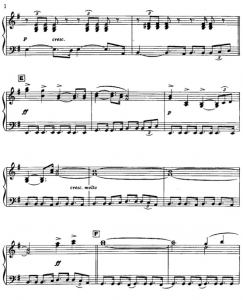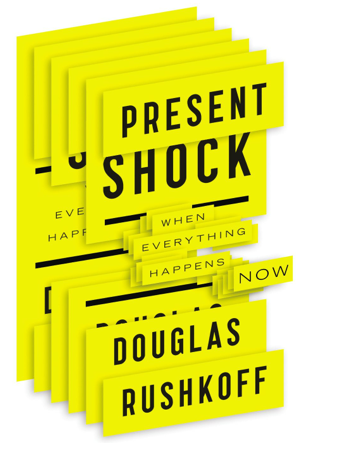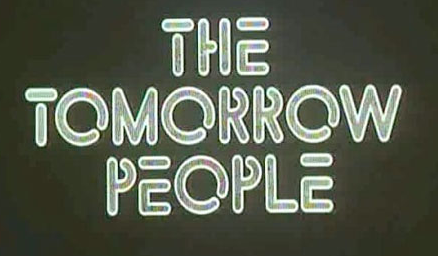
How can employers increase the quality of thinking inside their organisations? The use of music is one option, although its abstract nature and ubiquity can mean that we forget about its power.
The abstract nature of music is very relevant to any discussion about thinking because, as Oliver Sachs has pointed out in his book Musicophelia, “the neural processes underlying that which we call creativity have nothing to do with rationality. That is to say, if we look at how the brain generates creativity, we will see that it is not a rational process at all; creativity is not born out of reasoning”.
Music has existed and been highly prized in all human cultures and may have developed before language itself. There is no evidence so far to prove that music is in any sense necessary for human health and happiness or that music direct connects to human emotions, but there is evidence to suggest that music can make us well. We haven’t quite got to the stage where medics are prescribing Procoviev or Primal Scream, but it could happen. Doctors in the US have already observed that music can lower cholestrol or physically expand blood vessels, but so far nobody is recommending Placebo (the rock band) to replace sugar pills.
There is also the intriguing idea that the electrical discharges from neural networks might resemble music if they were communicated acoustically, which could explain how music somehow helps to highlight information or feelings that have otherwise been forgotten, unnoticed or repressed and, as such, may somehow have a function or use that is similar to dreaming. Both can bypass logic. Both can influence the creation of ideas, either through triggering thoughts deep inside the brain stem or by connecting visual images in the cortex. And, of course, music, like ideas, can bind together otherwise disparate groups of individuals.
Not all music will do this. Some research suggests that classical music is better than pop music (although other research suggests that it’s not the type of music but rather what the individual listener likes) and that music that increases or decreases in volume influences thinking better than music that doesn’t. I suspect that certain chord changes might have a similar effect.
Examples of how dreams and sleep (and sleeplessness) have led to the creation of musical masterpieces include the story, related by Sachs, of Wagner literally dreaming up the introduction to Das Rheingold whilst in a semi-sleepless or somnolent state. Ravel similarly stated that melodies came to him in dreams and the effect also occurred with Mozart, Chopin, Brahms and Stravinsky. Clearly there is something going on here and whilst it is difficult currently to move much beyond these well-known anecdotes it would be stupid to dismiss the power of dreaming. Dreams are a source of valuable information and ideas and we should not dismiss the products of our dreams, or the dreams of others, quite so easily.
But we should remember that in one sense music is a modern invention. Until the late 1800s there was no way of recording music or sending it through the air via radio. In the 1920s radio broadcasts of live music became popular but it was not until the 1930s that permanent recordings became widely available. The widespread adoption of vinyl records did not occur until the 1950s. As for CDs these date from the 1980s and digital music is barely more than a decade and a half old. The point here is that individuals can now immerse themselves in music at all hours of the day and night and in any location – including at work, in shops, in fast food restaurants and gyms. Music used to be ‘fixed’, originally to where it was being played by musicians and later to wherever the music player (originally the gramophone) was located. Most kids nowadays would think such an idea insane. To them music is like water. It’s everywhere and can be turned on or off at will. But what are the implications of this omnipresence?
Putting aside the question of whether sticking earphones into your head during most of the day is making people deaf, what are the consequences in terms of attention and thinking? On one level certain types of music at certain times appear to catalyse thinking but what if the brain is constantly overloaded with aural distraction?
My main concern is with reflection and the generation of original ideas but there are other consequences too. If an individual is walking down a street listening to music then he or she is clearly less connected with the external environment. Getting run over by a car is one possibility, but so too is being totally unaware of the needs of a fellow human being in your direct line of vision.
But can music actually make you smarter? The idea of the ‘Mozart Effect’ in children actually dates from 1993 when Frances Rauscher, a psychologist, wrote a paper that appeared in the American science journal Nature. The paper summarised a study in which Rauscher asked 36 college students to listen to 10 minutes of Mozart or 10 minutes of relaxation music. Immediately after listening to one or other form of music the students were asked to complete a series of spatial reasoning tests, including a test involving imagining what a piece of paper folded several times and then cut with scissors would look like once it was unfolded. The finding was that the students who had been listening to Mozart were better at these tasks than the students who had not.
What happened next was actually more interesting than the experiment. The media got hold of this story and started to extrapolate. First the media drew the conclusion that the effects of a simple paper folding exercise could be applied to broad intelligence and second they somehow drew the conclusion that what had worked with college students could also be applied to small children and even foetuses. This obviously excited all kinds of excitable people and pretty soon politicians were jumping on the musical bandwagon. In 1998, the Governor of the American state of Georgia insisted that all new mothers be given classic music to play to their infants while in the state of Florida it was mandated that day-care centres play classical music to their infant students.
Why did this happen? According to Nikhil Swaminathan, writing in the Scientific American, the reason was that the research seemed to connect directly with a belief in infant determinism (the idea that what happens to a child in their very early years has a critical, and possibly irreversible, impact on the rest of their life).
Some musicians and ‘ologists’ still believe that music therapy has a profound effect on young brains, and there is some evidence (e.g. Alfred Tomatis) to suggest that music affects conditions such as dyslexia, autism and attention deficit disorders, but overall the jury is still out as to whether the effects are anything more than insignificant or temporary.
A German study by the Federal Ministry of Education and Research in 2007 claimed that the Mozart Effect was nonexistent and many individuals have argued that young children would be better off learning an instrument rather than listening to a recording of Mozart. It could even be argued that placing a small child in front of a television to passively listen to music is actually damaging because it is once again an example of the negation of parental care. The parent is free to do something else whilst the child watches or listens to music but the child is then deprived of physical contact and misses out on free play.
It would seem that there is indeed an effect at work here but we should not be too hasty in drawing conclusions based upon small studies or flimsy evidence. Where there is a growing amount of evidence is the area of musical therapy with seriously brain damaged patients and also with conditions such as musical hallucinations, all of which are opening up a greater understanding of how various parts of the brain work and how external stimuli effects the inner workings of the mind.
Musical hallucinations are exactly what you’d expect them to be. They are auditory hallucinations in which a piece of music is heard over and over again in someone’s head. The music is usually familiar, although the condition generally affects older people and the music can date from many years ago.
Most interesting to me though is the fact that these hallucinations can occur if the physical senses – or sensory inputs to the brain – have too little external stimulation. So whilst going to a thinking cabin in the woods for a week might be a very good thing, indulging in deep silence or stillness for too long may eventually result in you hearing things. Why does this happen?
According to experts such as Jerzy Konorski, a neurobiologist writing in the late 1960s, it is because sensory connections are a two way street. We have pathways between our eyes, ears, nose, skin and so on to our brain but these pathways also work in reverse, so that the brain can pick a memory of an event (the hearing of a piece of music, the smell of a freshly baked cake or the feeling of a leg long since lost) and ‘play’ these experiences back to our physical sense receptors. These nostalgic connections are not as strong as the ones going the other way but they do exist and they can come to the fore, especially when sensory input from the eyes, ears and so on coming the other way is weak or non-existent. In other words, a strong flow of sensory inputs to the cortex prevents this backwash from occurring.
As you’d expect the science has moved on somewhat from the late 1960s and in 2000 Timothy Griffiths produced a paper that showed the effect is indeed real. Using PET scans Griffiths showed conclusively that musical hallucinations were real and also that the neural networks that are activated when a patient has a musical hallucination are virtually identical to those that ‘lit up’ whilst listening to ‘real’ music. As far as the brain is concerned there is almost no difference between the two.
This reminds me of a Harvard Medical school study quoted by Susan Greenfield. Three groups of volunteers (none of whom played the piano) were asked to sit in identical rooms. The first room contained a piano and the participants were given five days of piano tuition. The second room contained a piano and the volunteers were asked to imagine that they were practising the piano for five days, while volunteers in the third room were told to avoid any interaction with the instrument.
Brain scans showed that the brains of the group that were given piano tuition had changed markedly whilst the brains of the group that had been told to avoid the piano obviously hadn’t. But here’s the good bit. The brains of the volunteers that had been told to imagine that they were playing the piano had changed almost as much as the group that had actually been playing. As Greenfield observes, “ The power of the imagination is not a metaphor’.
Brain imaging techniques have shown some other interesting things too. Firstly, whilst some professional musician’s brains are shaped slightly differently from those of non-musicians or from people without perfect pitch, it does appear from these scans that musicality exists in virtually everyone. Moreover, whilst listening to Bach certainly won’t turn you into Mozart, exposure to classical music (and I’m not aware of any other studies being done using other forms of music) appears to enhance the mathematical and verbal skills of individuals at quite an early age. This might sound like a contradiction but my point is not that playing music doesn’t improve cognition, simply that playing music to a small child won’t turn the child into a musical genius.
This is something else that comes up in Musicophelia when Oliver Sachs discusses some work carried out by Frances Rauscher et al at the University of California at Irving. One study involved exposing participants to Mozart (versus listening to nothing or to the types of general relaxation music found in elevators, supermarkets and day spas around the world) and measuring their abstract spatial reasoning.
Sure enough a temporary improvement was found. There is also research that suggests that if you concentrate on listening for a specific sound your hearing actually gets stronger. This sounds similar to research suggesting that the act of concentration has the effect of increasing neural activity, but it also suggests to me that in some cases individuals are only able to hear things when they are fully concentrating.
Other studies have disputed the findings of Rauscher but there is overwhelming evidence (e.g. Takako Fujioka) that exposure to certain types of music at an early age does have a profound influence upon the young brain although again we should be clear not to confuse ‘profound influence’ with ‘creation of genius.’
To quote Sachs once more: “ There is little doubt that regular exposure to music, and especially active participation in music, may stimulate development of many different areas of the brain.” Quite how this works nobody yet knows but there appears to be a deep human susceptibility to music (and, perhaps, to the visual arts) and whilst humans were probably not created with this ‘in mind’ it is now hard wired into our nature.
Perhaps the explosion in the availability of music on demand is therefore a good thing. Maybe the future will be a more musical (and hence more emotional?) place. Nevertheless, not all households play music and parents, in particular, need to think very carefully about how to expose children to music at an early age and how to link music to other forms of experience that in turn link to our imagination and memory.
It’s early days in the commercial context too. Despite the fact that cathedrals and churches have been mixing music and architecture for thousands of years, businesses (or governments for that matter) pay almost no attention to this neurological mixture. In fact, apart from churches and concert halls I cannot think of many examples of buildings where architecture and music have been designed together.
There are plenty of examples of spaces that have been designed to influence productivity (i.e. to make the human body more productive) and there are examples, several of which I have mentioned already, where a physical space has been designed to influence mental productivity. There are also a few examples of organisations using music to influence attitudes or behaviour. One such example is the Tokyo Printing Company in Japan. About ten years ago, the President of the company, Koichiro Sugihara, was thinking about how the right side of the human brain works and decided to play Mozart as background music in the office. At first employees found the music distracting but after a while people began to feel that something was missing when the music was turned off. In the eight years since the experiment was devised losses resulting from careless mistakes fell by 90%.
Hopefully this will change in the future when designers and architects (and the forgotten heroes responsible for commissioning these visionary people) create buildings that will sing. Buildings where not only is the acoustic environment pleasant, but which actively combine physical spaces (including texture and colour) with music to improve the quantity and quality of our thinking and ideas. Buildings that combine the physical with the philosophical and the spiritual. Buildings that, as the writer Harry Eyres once said: “cleanse our emotional and existential filters of all the gunge that keeps on clogging up our lives”.
Finally, there are two further things to say about the relationship between music and thinking. The first is the mnemonic power of music. Think back to your childhood or, if that’s too far away, perhaps the childhood of your children. Were you sung to, or did you sing songs to remember complex information? Your instant reaction is possibly “No” But perhaps you don’t think of music in this way. Surely you learnt, or taught, the alphabet using a rhyme? A, B, C, D, E, F, G…. Similar tricks are used with older students to help students memorize everything from periodic tables to US Presidents and the technique has been used across all kinds of cultures. The point here is that music and language almost certainly have common origins and the use of music and pictures to convey information goes back thousands of years.
This is partly because it is easier for most people to remember things via association or via stories. Like music, a predilection for story telling seems to be almost hard wired into the human brain and is universal across all human cultures throughout time. Some people, of course, are lucky. They possess photographic memories. But for most of us thinking via music, or using images to visualise information or data is a good second best.
So what is the function of music in anthropological terms? One explanation is that music is intended to bring people together. It is communal and uniting. This certainly makes sense when you think of church music but there are plenty of other examples in an organisational context too. In Japan and Korea there are company songs that bind factory employees together at the start of each morning. There are marching songs in the military and there is the recent craze for communal African drumming in the US and UK as a team building event.
Going further back, Calypso rhythms developed with the arrival of the first African slaves in the sugar plantations. The slaves were forbidden to talk to one another and so they developed songs to alleviate their pain and suffering and to mock their masters.
I’m not suggesting for one moment that every organisation should have a company song or insist that employees engage in compulsory musical movement, but it does strike me that music and stories are underutilised in the organisational context. Music, in particular, has the power to make people alert, but it also has the power to awaken. Music can trigger feelings (something Nietzsche, a lifelong depressive, wrote of frequently), which in turn produce thoughts and images in our minds and it is these thoughts and images that can become novel solutions and innovative new ideas. Music is directly related to the production of ideas.
By the way, if you were thinking that an environment of depression is commonly associated with creative genius you’re right. So too are a host of other illnesses according to Paul Wolf, a clinical pathologist at the University of California. Einstein, Van Gogh, Cézanne, Ravel, Goya, Michelangelo and Warhol all suffered from diseases that are now thought to have contributed to their greatness. Melancholy, in particular, seems to be common amongst great sculptors, painters, writers and composers and Asperger’s syndrome has been linked with extreme perseverance, perfectionism and a disregard for the opinions of one’s peers – exactly the kinds of behaviour one needs to create breakthroughs and masterpieces that defy prevailing logic or make no immediate or logical sense to the outside world.
The idea of artistic genius being related to madness goes back centuries but recent discoveries in neuroscience are beginning to explain why this might be the case. Maurice Ravel wasn’t mad in today’s terms but he was almost certainly suffering from Frontotemporal Dementia (FTD) when he composed ‘Bolero’ at the age of 53. FTD is a disease whereby the frontal lobe of the brain, and possibly the temporal lobe of the brain, shrinks. The point here is that the brain is made up of various areas and networks which control or inhibit other areas, so when one area or circuit is damaged other areas or circuits can come to the fore. Indeed, when certain circuits are injured or damaged beyond repair the result can be a remodelling of the brain whereby other brain functions become stronger. A parallel here, perhaps, is blindness. If sight is removed other senses such as smell or hearing can become stronger, so perhaps release of artistic talent is in some way dependent in some people on the loss of one or more of the senses, which is in turn related in some mysterious way to the release of inhibitions.
From a purely personal standpoint I do seem to be able to think better when I close my eyes and it is perhaps no accident that some people close their eyes when they are thinking because this taps into certain parts of their brains.
In Ravel’s case brain disease meant that he had difficulty writing musical scores and there are examples of other artists that either lose the urge or the skill to paint or to compose when the right side of the posterior brain is damaged. Conversely, there are examples where severe brain damage is a catalyst for creativity. One such case involved a scientist called Dr Anne Adams who suffered from a condition identical to that of Ravel. In her late middle age Dr Adams gave up science and began painting. And at the age of 53 she started to paint the Bolero.
Now I’m obviously not saying that organisations should go in search of employees with bi-polar disorder, autism or dyslexia but I am saying that we should be less negative about some of these conditions because as well as pain they can bring great things. The general point here is that individuals and organisations put too much emphasis on finding the right sort of person and discount (literally) anyone that does not fit their mental model of what an ideal employee should be.
Similarly, organisations worry too much about what people are doing. If employees look busy it is assumed that they are being productive and vice versa. But, increasingly, organisations are buying a person’s ideas not their time. Or at least they are buying wisdom derived experience. Hence less emphasis should be placed upon physical effort and more should be placed on openness and receptivity – or as Robert Grudin, the author of The Grace of Great Things, puts it, they should “Stop searching for ideas and simply make room for them to visit”.
To conclude, organisations are obsessed with logic and numbers. They are also obsessed with their employees’ obvious physical presence. Words and images are appreciated but they are usually not appreciated enough. Moreover, whilst the written word is a powerful tool in the right hands, it is storytelling and song writing that form the foundations of our culture and we should wake up and tap into their power more often.
Equally, as James Vargui has pointed out in his book Synthesis, thinkers throughout history (for example the Christian mystics) have spoken about the “importance of developing ‘receptive’ qualities such as calm, quiet, and serenity, as well as the ‘active’ qualities of focussed attention, deliberate effort and conscious awareness” and it is music, amongst other things, that can deliver this serenity and ‘removal’ from everyday concerns.
Yes too much music and too much noise of the wrong sort delivered at the wrong time can be damaging to our thinking, just as too much of anything is unhelpful or unhealthy to the human mind and body. But in my opinion it is too much noise and not enough music that is the bigger problem when it comes to clear thinking. Clear and original thinking relies heavily on reflective and contemplative spaces. Often these spaces are quiet, often they are enhanced by music, but more often than not they are noisy or filled with the music of someone else’s choosing. Time to press pause and rewind.







